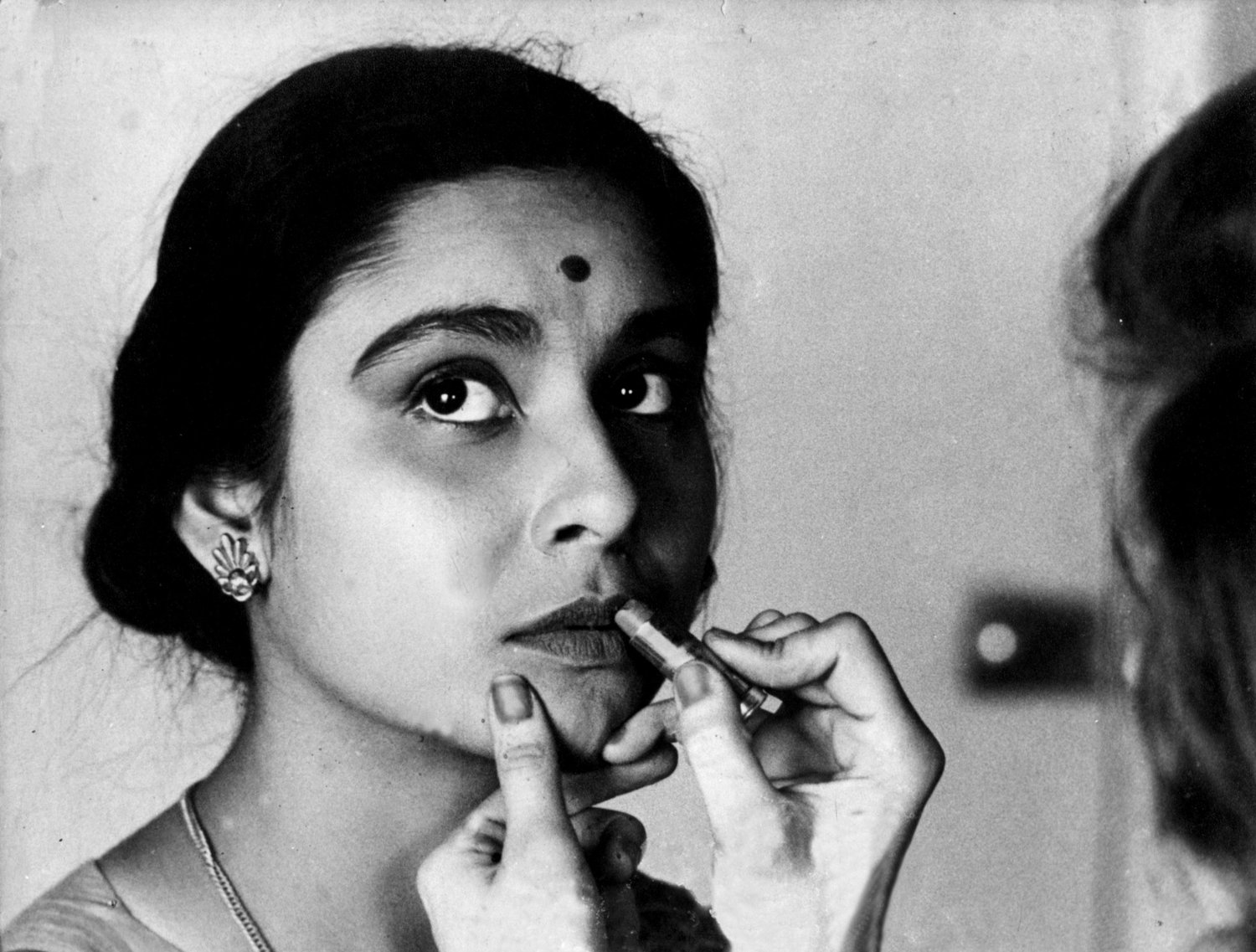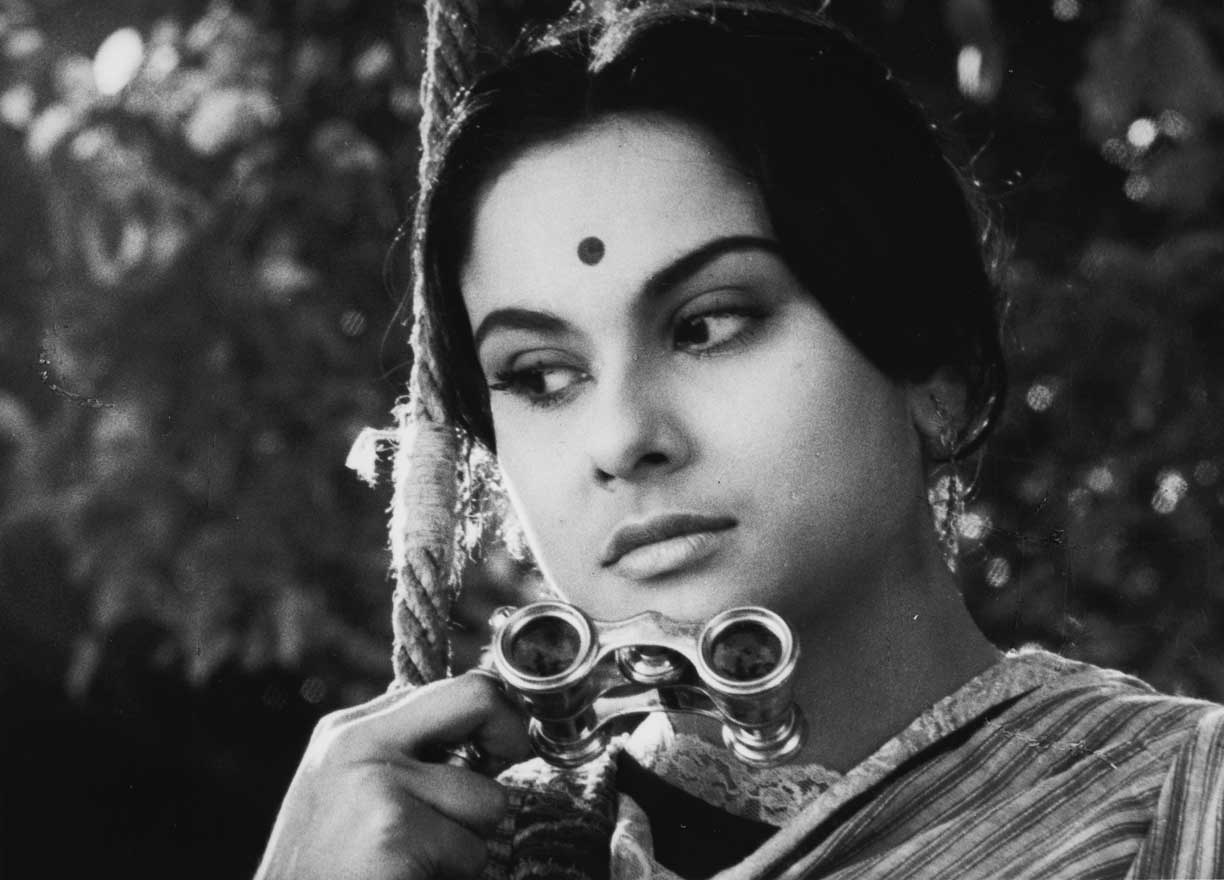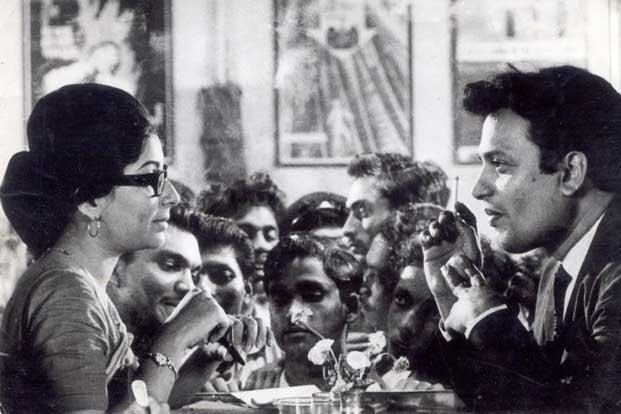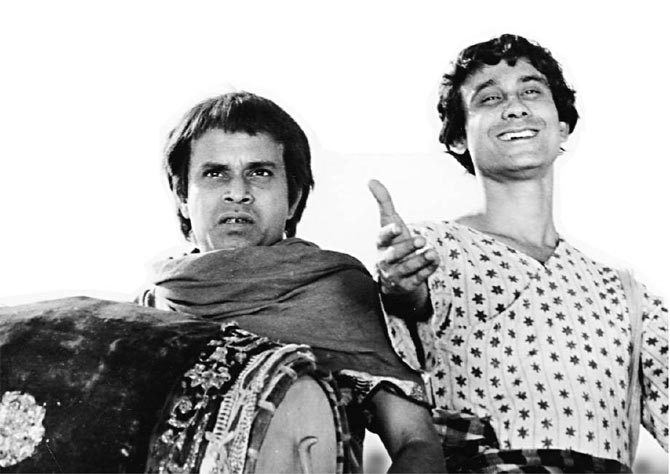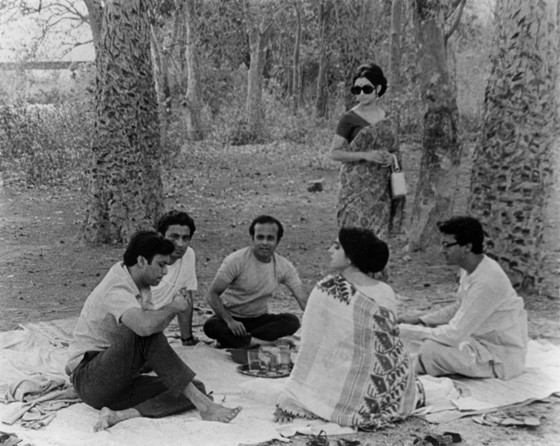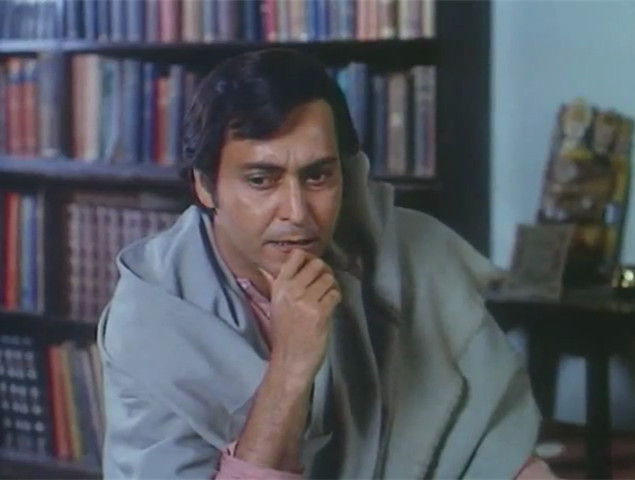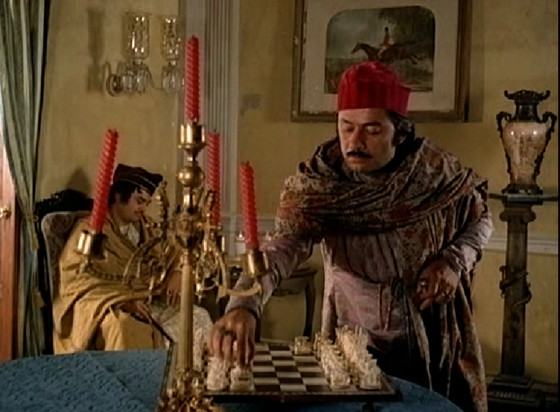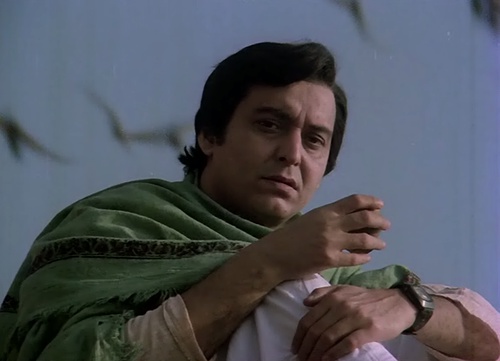8. Mahanagar (The Big City) (1963)
As a director Ray had made films about rural India, cities like Varanasi, Sikkim and Rajasthan. But he had a burning desire to make something that depicts his hometown, Calcutta. Even though the story revolves around a women taking control of her life, it’s the city which compels her to be independent. It is a story about hypocritical patriarchal society and a woman’s struggle to earn herself an independent place in such a society.
It is considered a s one of Ray’s best films, and it is also a film that has so much rebellion and so many new age ideas that made it difficult to be accepted at first. It also has a middle class struggle, the ripples of economic changes on dynamics of the society, and a dilemma of whether women should be allowed independence. With this story Ray portrays the volatile nature of urban life, but leaves us with the hope that prevails in this part of the country.
9. Charulata (The Lonely Wife) (1964)
Rays’s personal favourite among all his films, Charulata, is the closest depiction of a women trapped in the hedonistic world of comfort, wealth and luxury. The film depicts the loneliness and suffocation of an Indian woman without taking a feminist stance. Charu, played by poised Madhabi Mukherjee, who is married to a wealthy intellectual, is not challenged or encouraged to explore herself in any way till her brother-in-law shows up. Ray considers this film to be the closest to his vision. The film stars some of the finest Bengali actors and is known for its art direction.
Some of the themes in this film are particularly audacious for the time it was made. The scene depicting Charu’s growing affection for her brother-in-law is delicately superbly directed, and is Ray’s answer to critics who called him diplomatic in his story telling. There are certain shots in the film which are iconic in Indian cinema. One of them is Charu looking through her binoculars as her husband leaves for work. For anyone interested in Indian cinema vocabulary, this film is a guide book. The film received an award at Berlin Film Festival as well as other film festivals across the globe. It is considered a classic in Indian cinema.
10. Nayak (Hero) (1966)
This film is special for various reasons, one being it brought Ray and then superstar Uttam Kumar together for the first time. At the time of its release, Uttam Kumar was the biggest name in mainstream Bengali cinema, whereas Ray was the representative of New Age Indian cinema. But with a character study like Nayak, the thick line dividing conventional and unconventional story telling blended seamlessly. Also, after Charulata, this was Ray’s attempt at a male character study. The majority of the film takes place on a train, and the journey serves as an apt analogy for the change in background in each character’s life.
Even though the film is about a superstar, Arindam Mukherjee played by Mr. Kumar with poise and élan, it travels through various philosophical, political and moral dilemmas and issues of contemporary society. Every memory from Aridam’s past life has conflicting characters, which echo division between idealists and pragmatics. As in many other films, Ray does not shy away from showing the needy and selfish side of each character. A journalist trying to grab a sensational story pokes in the right places and gets what she wants; a businessman trying to get a deal with another traveller pushes his wife to build a rapport. The superstar on the other hand reveals his insecurities to a journalist, and the journey turns in to a metamorphosis, indicating his intention to rediscover himself.
11. Goopi Gyne Bagha Byne (The Adventures of Goopy and Bagha) (1969)
Goopi Gyne Bagha Byne is one of the most interesting choices made by Ray – whose filmography contained serious humanistic films up to that point. The film is a fantasy adventure of its titular characters. It is based on a story written by Ray’s grandfather, Upendra Kishor Roychoudhary. With this film Ray, for the first time after Parash Pathar, ventured into the comedy genre. The film was a product of a request by young Sandip Ray, who went on to become a director himself and make films for children.
Goopy and Bagha are an innocent aspiring singer and drum player, respectively. They meet in a jungle while exiled from their villages. In the jungle they encounter the King Of Ghosts who offers them three wishes. With those newfound abilities both go on to earn trust of a King who promises them marriage with his daughter. The standout sequence in this seemingly simple film is a Ghost Dance sequence which was conceived by S. V. Rau. This sequence has some of the most iconic images in the history of cinema. The superb use of zoom in the scene depicting Goopi’s singing or the interesting technique of freeze frame, which was also used by Truffaut in Jules Et Jim. It is a testament to the distinctive vocabulary that Ray managed to develop with each film.
12. Aranyer Din Ratri (Days and Nights in the Forest) (1970)
Based on a Bengali novel of the same name, this film shows the realistic adventures of contemporary Indian men. One of the best portrayals of modern India can be found in this masterpiece by a man who lived all his life in the city of Calcutta, and over time observed each and every cultural, ethical and political change taking place. Satyajit Ray gave India a film which is about a vacation, breaking with the convention in Indian cinema of trapping the hero in petty fights with local goons.
This film is about a group of friends who escape from the metropolitan clamour for the weekend. The pace reminds us of a respite in our favourite place. Yet with such a simple sounding premise Ray manages to subtly play with the way every character sees this vacation. Their backstories are shown only briefly, but each character is strongly established within the first half an hour. One must watch this film for the way an Indian treatment can change a western story.
13. Shonar Kella (The Fortress) (1974)
The detective film genre is unexplored territory in Indian cinema. Therefore this film is significant both in its subject matter and its scope, using Indian history to explore the mystery genre in Indian film. Adapted from a novel of the same name by Ray himself, this film is based on detective Feluda’s adventures. Ray has published a series of short stories involving the exploits of Feluda and his sidekick Topshe. This film also marks Ray’s attempt at making children’s films.
The cinematography of the film is another remarkable achievement by Ray’s long time collaborator Soumendu Roy. The scenes shot in Rajasthan desert are some of the best examples of low light photography at magic hours. A long take involving all three lead characters stuck in the desert is two minute long, with camera continuously tracking one of the characters with sun setting in the background – a technical achievement. Shonar Kella marks Ray’s first film that travels outside Bengal. Ray, who is known for stories set in and around Bengal, took up the challenge to tackle outdoor shooting in the desert. The result is an aesthetically pleasing and dramatically exuberant mystery adventure. For cinephiles who enjoy classical detective story telling, this film is a must-see.
14. Shatranj ke Khiladi (The Chess Players) (1977)
Released in the year 1977, this was Ray’s first film in Hindi since he had started making films twenty two years before. Satranj Ke Khiladi was by far the biggest project of Ray’s career – both in its scope and in the sheer production size. It had a cast which included stalwarts like Amjad Khan, Sanjeev Kumar, Shabana Azmi and Sir Richard Attenborough. The film was based on a short story by Munshi Premchad.
The story is set in 1856, when East India Company started annexation of provinces and kingdoms. The political development is evident in two ignorant and indulgent chess players, who are aware of the ongoing situation but remain passive due to lack of concern. The ignorant attitude is almost a metaphor for lack of nationalistic streak in the population at the time, which was then exploited by the British.
Ray employs his flair for authenticity and his meticulous set design tools and cinematography to perfectly recreate the era. This film also has some of the acerbic dialogues, which pierce through every viewer’s heart. This film is Ray’s take on historic epic film genre. On the surface it’s a story about two noblemen who like to indulge in a lavish but lethargic lifestyle, but deep down it shows how the British managed to establish themselves as a government.
15. Joi Baba Felutinath (The Elephant God) (1979)
Since the release of Pather Panchali in 1955, Ray had made at least one film every year. But in 1978 he took a break from filmmaking to concentrate on his publication and to indulge in other interests. After a break of one year, in 1979 Ray returned to directing, and he chose to bring Feluda back on the silver screen. His last film Shatranj ke Khiladi (The Chess Players) was in Hindi – the only Hindi film he would ever make – and it was a historical drama. Therefore he chose to make a mystery-adventure with Bengal’s favourite detective, Feluda. This time Ray chose a new backdrop of Banaras. The story again involves a child, sidekick Topshe, writer accomplice Jotayu.
The mysterious bylanes of Banaras add another layer to the story. The setting of Banaras and Banks of Ganga act as another character in the film which has a tightly woven screenplay, adapted by Ray from his novel of the same name. Ray has also used elements of Hindu religious superstitions to emphasize the black and white characters which are cunning and are always lurking around in the wrong places. Once again cinematographer Soumendu Roy captured the congested architecture of Varanasi with as much panache as he captured the vistas of Rahasthan desert in the previous instalment of Feluda’s adventures.
Author Bio: Amey is a working engineer on weekdays and a cinephile on weekends and literally any other time he finds. He has made short films, only to understand why he should respect good film making, that is because it’s goddamn difficult. He wishes to connect with film fans across the globe.
